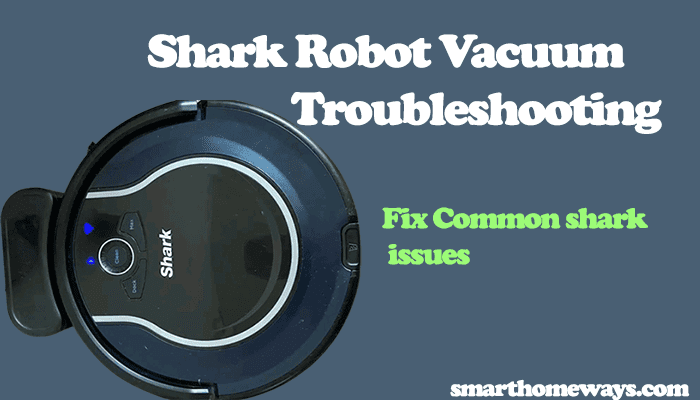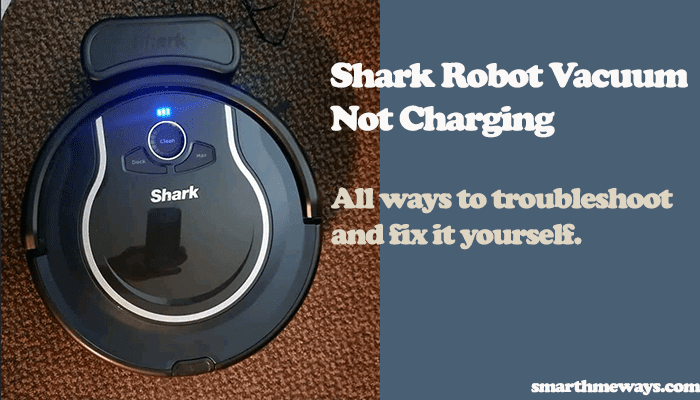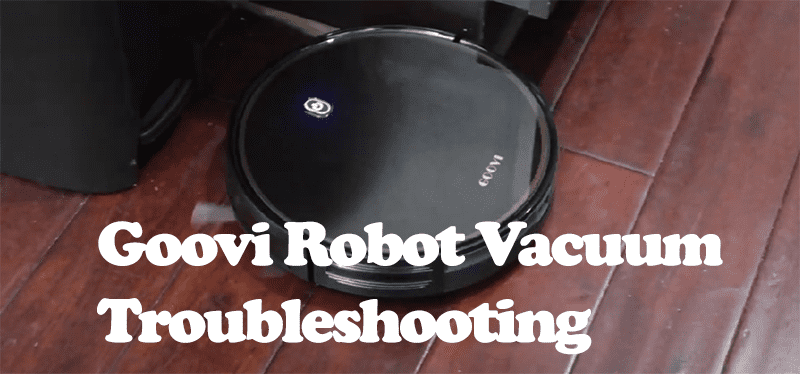Shark robot vacuums are a top brand in the robot vacuum industry. A robot vacuum adds convenience and ease of vacuuming in your house, from the advantages of scheduling it to commanding it with your virtual assistant. This convenience quickly disappears if your shark robot vacuum keeps stopping when on cleaning tasks.
A shark vacuum stops when it encounters a functional or physical obstruction. Again, it could also be due to a battery-related issue when it can’t hold the charge and needs replacing.
When the robot vacuum is stuck on an object, moving it sets it on the way. However, other causes require detailed troubleshooting. I’ll walk you through the common reasons your shark vacuum keeps stopping and the solutions to rectify the problem.
Why Does My Shark Vacuum Keep Stopping and Beeping?
A shark robot vacuum stopping a few seconds off the base indicates a power, clogged-up main brush, or bumper sensor failure. Again, sometimes it can also be attributed to a failing motor. This calls for your troubleshooting skills to identify and correct the problem.
If your shark robot stops and throws the “error 2” message indicating it’s stuck on an object, but you can find any on the location, the issue is with your vacuum’s main brush. It is probably jammed up with debris and hair, or an object is stuck there.
Shark robots use the flashing MAX light and indicator to communicate their error status – guiding your troubleshooting process. Several factors could cause the stopping problem on your Shark robot vacuum. Here are common reasons;
- Accumulation of debris and hair on the main roller brush, side brushes, and wheels.
- Sensor malfunctions and inaccuracies
- Low battery capacity insufficient to support the cleaning task
- Physical object obstruction
- A full dustbin collector – always empty your vacuum after 2 – 3 cleaning jobs.
- Worn-out or faulty components
The main culprit for the obstruction error is usually the main brush or wheels being clogged up. To get your robot vacuum functioning, try these simple solutions.
Fixing Shark Robot Vacuum Keeps Stopping Problem
As you probably know, it’s not always smooth running with robot vacuums; occasionally, you must carry out maintenance practices to keep your vacuum running and extend its lifespan.
Your shark vacuum stopping indicates either an issue with roller brushes or wheels. Prolonged accumulation of dirt and debris on these parts impedes the vacuum’s mobility causing it to strain and consume more power. Eventually, the vacuum stops.
Thorough Clean the Robot Vacuum
With time, debris and hair accumulate on the vacuum’s moving parts, causing mobility difficulties.
The wheels, side brushes, and the main roller brush will get tangled with hair or pet fur over time.
Additionally, the robot’s sensors accumulate dirt and dust over time, affecting their functionality. The front bumper and cliff sensors need cleaning to remain efficient and effective.
Turn off your Shark robot on the side power button before beginning the cleaning cycle. Here’s how to clean your Shark robot and the areas to focus on;
Wipe Down the Vacuum – Use a clean, soft cloth to wipe the exterior surfaces, including the body, underneath, and sides.
Clean the Sensors – Check for sensors on the vacuum’s bottom and front bumper. These sensors help the vacuum detect obstacles and navigate efficiently. Use a soft, dry cloth or a cotton swab to gently wipe the sensors to remove dust, dirt, or smudges.
You can use a compressed air can to blow some air underneath the front bumper to dislodge stuck dirt particles.
Clean the Wheels – Inspect the wheels of your Shark vacuum. Remove any visible debris, such as hair, threads, or tangled fibers, from the wheels using your fingers or a pair of tweezers. Remove the front wheel and clean the shaft and wheel cavity.
Ensure the wheels can rotate freely within their chamber.
Clean the Brush Roll – Remove the primary brush roll from the vacuum by locating the release button or screws. Use scissors or a cleaning tool to remove hair or fibers wrapped around the brush roll.
After cleaning, reassemble your Shark robot, and turn it on. Test if it now works.
Notably, the primary brush roll will attract debris as the brush collects the dirt. Therefore, ensure you keep cleaning it after a few runs.
Check The Battery Status
Shark robot vacuums run on rechargeable lithium-ion batteries. These batteries degrade over time and stop holding power; this could be why your shark robot stops a few minutes off the dock.
Typically, the lifespan of your robot vacuum’s battery is around 2 to 3 years before requiring a replacement. A fully charged battery should provide a runtime of over 120 minutes, ensuring the optimal functionality of your robot vacuum.
However, the battery naturally deteriorates as time passes and eventually needs replacing. Fortunately, replacement batteries for robot vacuums are readily available and more affordable than purchasing a new vacuum.
When your robot vacuum’s battery declines, specific unmistakable indications suggest a replacement is necessary. These signs include;
- Experiencing rapid battery drainage, often within 10 to 15 minutes of a cleaning session.
- The absence of a power indicator light indicates a lack of power supply.
- Declining performance of the robot vacuum even after thoroughly cleaning and replacing worn-out components.
- Resetting the battery fails to improve the vacuum’s performance levels.
- When the battery reaches a certain age, it becomes apparent that a replacement is overdue.
Once you replace the battery with a new one, your robot vacuum should return to its optimal functionality.
Inspect Your Shark Robot Vacuum Parts
Most Shark robot vacuums are exposed to wear and tear. As the robot ages, you need to do a few replacements here and there to improve its performance and extend the service life.
Good maintenance practices require frequent replacement of the main brush, side brushes, filters, batteries, etc.
First, inspect your shark robot to identify worn-out parts that need replacing. The drive system, roller brush, motor belt, and wheels for the basis of the robot’s mobility. Well, forgetting the logic side for a minute.
A damaged core part affects your shark robot’s mobility and could be why it keeps stopping.
Shark Robot’s basic maintenance practices recommend replacing your vacuums (filters, side brushes, main roller brushes) every 3 – 6 months. This keeps your robot performance spot on.
Contact Shark Robot Support
If you can’t get your shark robot working after the above solutions, it’s time to contact the Shark support team.
My pal’s Shark AI vacuum had a faulty cliff sensor, and we could get it going despite numerous efforts. Finally, we contacted the support team, who sent a replacement unit.
So, if you have given it all but still no results. It could be a cause of a faulty unit or a component you can’t fix.



